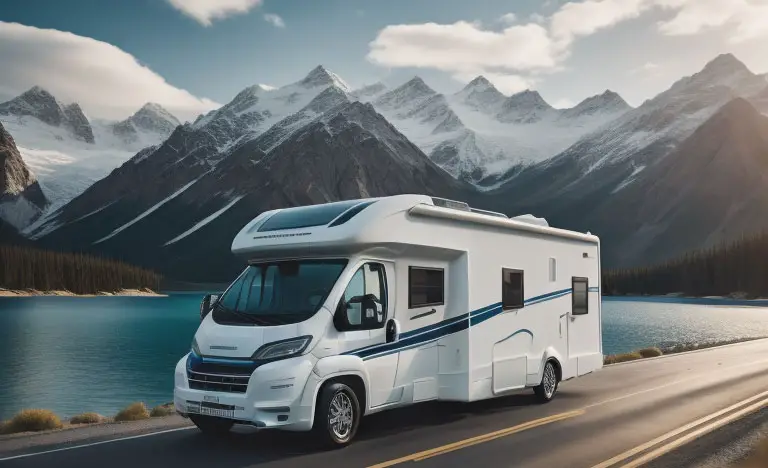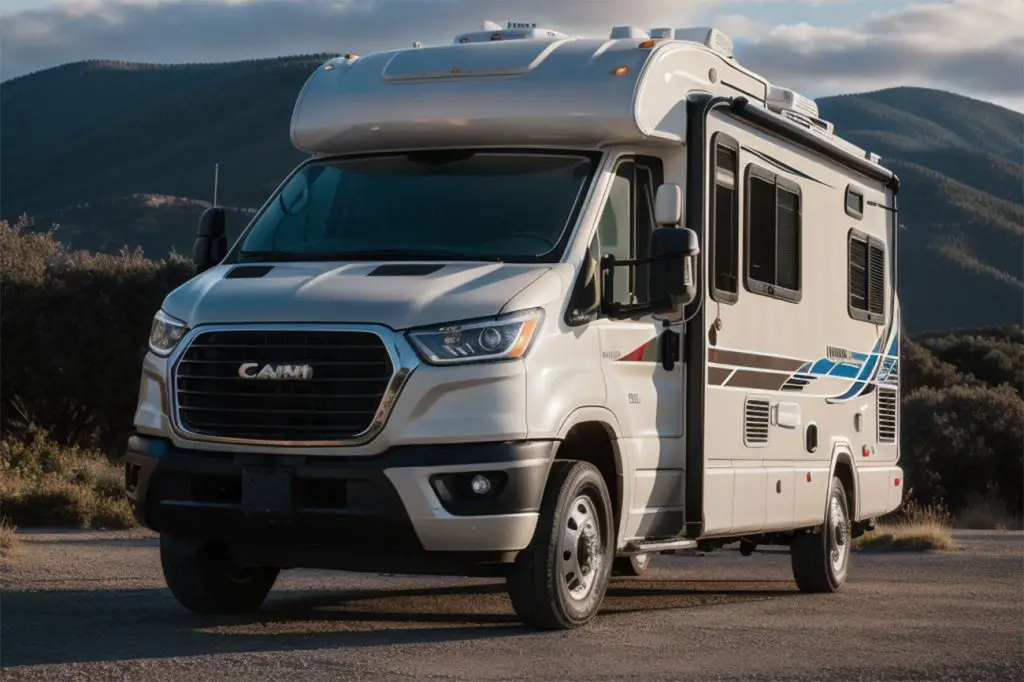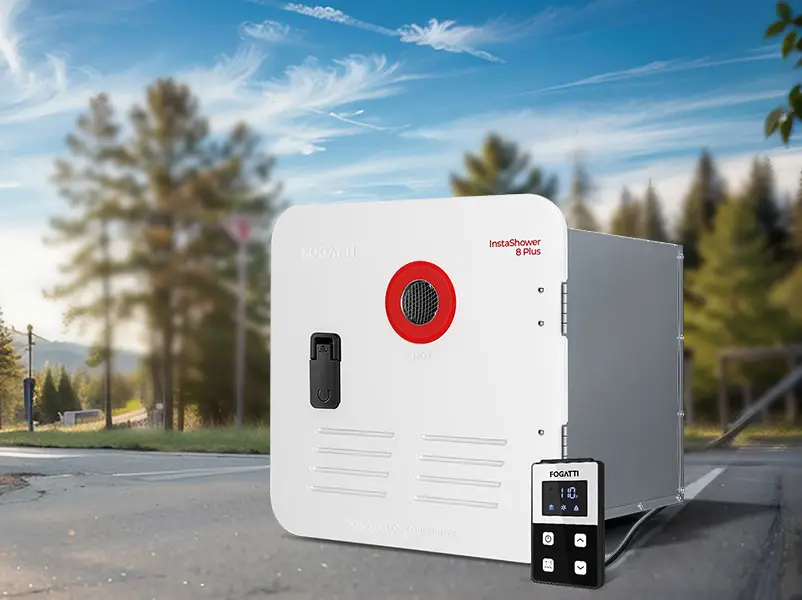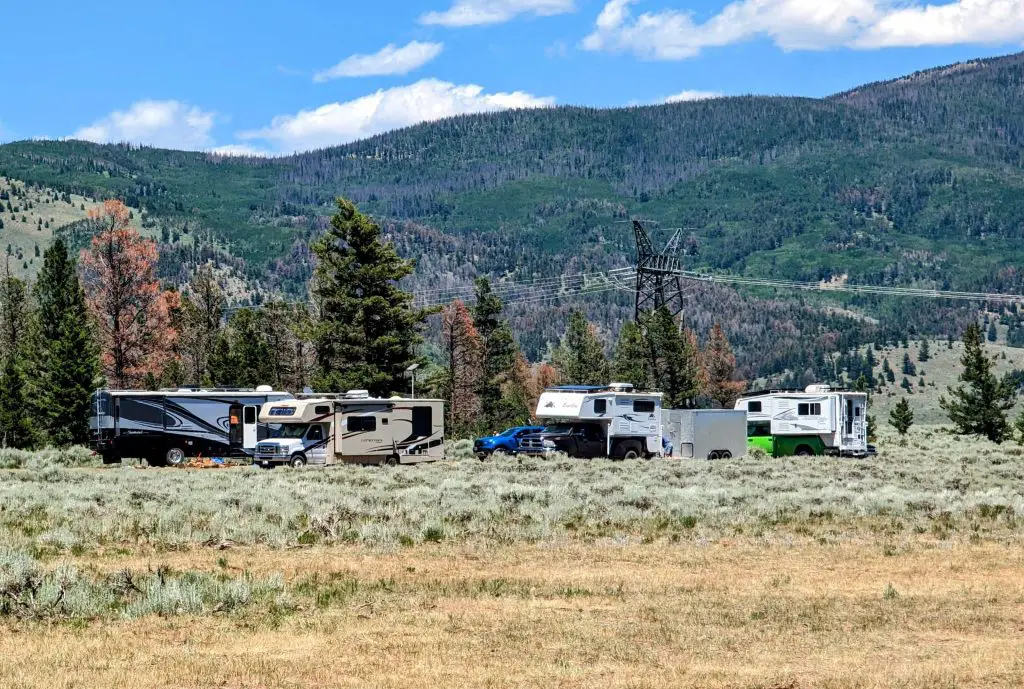Key Takeaways:
- Lightest Automatic Cars for RV Towing: Consider lightweight automatic cars such as certain year’s Smart Fortwo, Chevrolet Spark, Ford Focus, Kia Soul, Ford Fiesta, Fiat 500, and Honda Fit for RV towing, ensuring they are approved for flat towing and equipped with the necessary towing components. Not all models are capable. Many times newer models are not capable of being flat towed.
- Advantages of Lightweight Cars for Towing: Lightweight cars consume less fuel, are easier to handle, and are cost-effective, making them an ideal choice for towing behind RVs.
- Safety: Lightweight cars place less strain on the RV’s engine, transmission, and brakes, reducing the risk of mechanical issues and ensuring a safer journey.
- Towing Capacity: Lightweight cars are suitable for towing smaller trailers and campers, providing flexibility for RV enthusiasts.
- Flat Towing vs. Dolly Towing: Consider the pros and cons of flat towing and dolly towing to determine which method best suits your needs and preferences.
- Legal Requirements: Understand the legal requirements for towing in your state, including regulations for lighting, weight, and length.
- Accessories: Essential towing accessories include baseplate brackets, tow bars, wiring and lights, braking systems, and safety equipment.
- Vehicle Compatibility: Verify that your chosen vehicle is suitable for flat towing, adheres to manufacturer guidelines, and has the correct towing equipment installed.
One of the joys of owning an RV is the freedom it offers to travel the open road. However, when you’re on the move, it’s essential to have a reliable vehicle in tow. Whether you’re planning a cross-country road trip or a weekend getaway, choosing the right car to tow behind your RV is crucial. Let’s explore some of the lightest automatic cars that are perfect for RV towing. These vehicles combine convenience, efficiency, and ease of towing, making your RV adventure even more enjoyable.
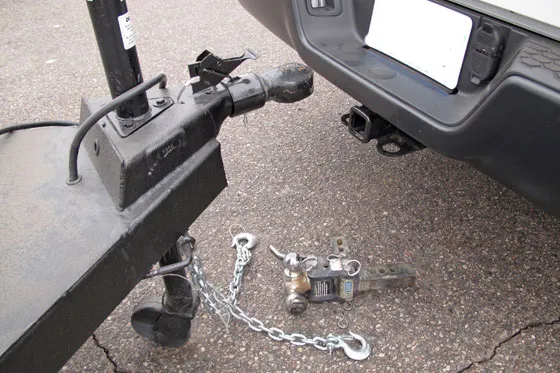 Why Choose a Lightweight Car for Towing?
Why Choose a Lightweight Car for Towing?
Choosing a lightweight car for towing is a smart choice that offers a lot of advantages. Lightweight cars consume less fuel, are easier to handle, and are cost-effective.
Better fuel efficiency
When it comes to towing, heavier cars tend to consume more fuel. It’s simple–the more weight your car is carrying, the more fuel it will need to burn to get to your destination. On the other hand, a lightweight car consumes less fuel, which means you can save a lot of money in the long run. Choosing a lightweight car for towing is also more eco-friendly since it produces less carbon dioxide emissions.
Easier to handle
Another great advantage of using a lightweight car for towing is how easy it is to handle. The lighter your car is, the easier it will be to navigate curves, turns, and hills. You will also find it easier to parallel park when you arrive at your destination. A lighter car gives you more control, making your towing experience safer and more enjoyable.
Cost-effective
Choosing a lightweight car for towing can also be cost-effective. Lightweight cars are generally less expensive to purchase than heavier ones. And since they are more fuel-efficient, you’ll save money on gas in the long run. Additionally, lightweight cars require less maintenance, which can also save you money. Overall, choosing a lightweight car for towing is a smart financial decision.
Safer on the road
A lightweight car for towing is safer on the road because it places less stress on your car’s engine, transmission, and brakes. When you’re towing, these parts can wear out faster, leading to expensive repairs. Lightweight cars won’t put as much strain on your car, making it less likely to break down during your trip.
Towing Capacity
Choosing the wrong vehicle for towing weight can result in damage to your vehicle or be downright dangerous. A lightweight car offers a kind of towing capacity that is very appropriate for smaller trailers, camper trailers, and a range of other non-commercial configurations.
Flat Tow or Dolly? Pros And Cons
Deciding whether to flat tow your vehicle or use a dolly can be tough. Let’s see the pros and cons of both methods to help you decide which option works best for you.
Flat Towing
Flat towing is when you tow your vehicle without any of its wheels touching the ground. This method is considered the easiest way to tow as it requires the least amount of equipment. It’s also a great option for those who don’t want to invest in a dolly or car trailer.
Not all vehicles can be flat towed. The reason for this is that when flat towing, the vehicle’s engine is not running, and as a result, the transmission fluid is not actively cooled. Without proper cooling, the transmission can overheat and suffer damage. It is worth mentioning that electric vehicles are generally not recommended for flat towing at this time. To address this concern, it is crucial to prevent the overheating of specific components by disconnecting the transmission and transfer case from the driveshaft. In some cases, vehicles with manual transmissions or 2-speed transfer cases allow for easier placement into “true neutral,” thus ensuring the disconnection of the driveshaft and preventing potentially dangerous overheating. If you want to flat tow an automatic car, you will need to make sure that it can be flat towed. Most automatic cars cannot. Flat towing can put a lot of stress on your car’s transmission and brakes, which can lead to potential damage. Additionally, since your wheels are not touching the ground, you may experience some swaying or fishtailing if you’re not driving defensively.
Using a Dolly
Using a dolly is a popular option for those who want to keep their car’s transmission and brakes from experiencing too much stress. With a dolly, your vehicle’s front wheels are elevated off the ground, allowing for a smoother ride and better handling. Dolly towing is also a cheaper option compared to flat towing as it requires less maintenance in the long run. However, dolly towing can be more complicated as it requires additional equipment, like tie-down straps and lights. It also requires more time to disconnect and reconnect your vehicle to the dolly.
[amazon bestseller =”tow dolly” items=”1″]
Accessories
When considering towing with an RV, it’s essential to understand the different accessories that can make towing easier. For flat towing, you’ll need a baseplate, which is installed on your vehicle’s frame and allows it to attach to the tow bar. You’ll also need a tow bar, which is attached to both your RV and your vehicle. For dolly towing, you’ll need a dolly itself, along with tire straps and safety chains. Both methods require additional braking systems to ensure your vehicle doesn’t collide with your RV during sudden stops.
Legal Requirements
Before you decide to tow with your RV, it’s essential to understand the legal requirements in your state. In most states, you are required to have brake lights, turn signals, and license plates on your towed vehicle. Your RV and towed vehicle must also meet weight and length requirements. While these requirements may seem tedious, they’re put in place to keep you and other drivers on the road safe.
What Do You Need To Install For Flat Towing?
There’s no denying that flat towing your car on your RV adds a level of flexibility and fun to your travels. But, there are a few items you need to install before you hit the road.
Tow bar
The first item you need for flat towing prep is a tow bar. This bar connects your RV to your car and allows for four wheels on the ground towing. For your safety, make sure you choose a reliable bar with the correct weight capacity for your vehicle.
The two most common types of tow bars are the A-frame and the receiver-mounted. A-frame tow bars bolt on to your vehicle’s frame, while receiver-mounted tow bars have a quick-release feature that pops into a hitch on the back of your RV.
Baseplate brackets
Once you have your tow bar, you’ll need baseplate brackets installed on your vehicle. These brackets are attached to the car’s frame and serve as the connecting point for the tow bar.
Make sure you choose a reputable baseplate bracket for your vehicle’s make and model, installed by a professional. It’s essential to have these brackets securely attached to your car before towing.
Wiring and lights
Driving with your car’s lights on helps other drivers see you on the road. And if you want to stay legal, you must have a working brake, turn signal, and running lights while flat towing.
To make this possible, you’ll need to install a wiring kit that connects your RV’s lighting to your car’s lighting system. The wiring kit will not only ensure your lights work, but it will also alert you when your car’s brake pedal is pressed. That way, you’ll know when your car is slowing down or coming to a stop.
Braking system
Finally, you should install a supplementary braking system in your car. This system helps you stop your vehicle more quickly and smoothly while towing.
A braking system is critical if you’re flat-towing a heavy car or plan to visit hilly and mountainous areas. During an emergency stop, an unbraked towed vehicle can shove the RV forward or cause it to skid. A braking system also helps prevent undue stress on your RV’s brakes when braking downhill.
[amazon table =”11625″]
5 Lightest Automatic Cars To Pull Behind The RV
Even though I have researched smaller automatic vehicles you can flat tow, you should always verify if your specific model is suitable for flat towing and adhere to any listed restrictions or limitations, as they are in place for a purpose. It is important to note that towing against the manufacturer’s advice or disregarding other restrictions may result in voiding your warranty.
Now, let’s take a look at some of the lightest cars that I found ideal for RV towing:
Smart Fortwo
Weighing in at just around 1,800 pounds, the Smart Fortwo is one of the lightest cars on the market. Its compact size makes it a breeze to tow and park, making it an excellent choice for RV enthusiasts.
Model Year 2009 and 2017 smart fortwo equipped with the twinamic Dual-Clutch Automatic Transmission can be flat-towed behind RVs. The Fortwo is perfectly suited for solo or duo travelers who don’t require significant storage space for gear or cargo. Please note that the Electric Drive models of the Fortwo cannot be flat towed, but the standard models can be towed without any speed or distance limitations.
Chevrolet Spark
Chevrolet’s subcompact hatchback presents an excellent option for urban commuting, offering agility without the bulk or expenses accompanying larger SUVs or off-road vehicles. It’s around 2,300 pounds. It’s compact, fuel-efficient, and well-suited for towing behind your RV. Although it’s important to note that only manual transmission models can be flat towed, 2013 models have a speed limit of 55 mph, increasing to 70 mph for 2014 and later models. Unfortunately, the discontinuation of the Spark after 2022 means that finding a used one is currently the best way to acquire this affordable and compact hatchback.
Ford Focus
If you are seeking a more compact vehicle, the 2016-2018 Ford Focus 2.0L presents an excellent choice. It offers maneuverability and convenience for driving and parking, while still providing ample storage for groceries and personal belongings. With a curb weight of around 3,000 lbs., it is suitable for towing behind motorhomes. Please note that Ford has discontinued the sale of Focus models in the US after 2018. However, it is important to note that certain models, such as the Focus Electric, Focus ST, Focus RS, 1.0L EcoBoost®, and I5 2.0L Automatic, should not be flat towed. Additionally, it is recommended not to exceed towing speeds of 70 mph for this vehicle.
Kia Soul
For those seeking a Kia as their dinghy vehicle for flat towing behind an RV, there are specific options that fit the bill. For Example the 2021 Kia Soul Turbo with a dual-clutch automatic transmission (DCT) can be flat towed. It weighs around 2900 lbs. Thanks to the innovative DCT design, shifting the transmission into neutral enables safe flat towing. As of now, the Kia Soul GT and Forte GT stand as reliable options for dinghy towing, thanks to their advanced DCT technology. It’s essential to adhere to these specific transmission options for safe towing. While previous towing guides may have included other models like the Forte, Soul, Rio, and ForteS, various factors have led to their removal from the flat towable list.
Ford Fiesta
It is possible to flat tow Ford Fiesta models automatic and manual from 2011 to 2019 and it is suitable for long-distance towing behind any RV. The Ford Fiesta is a versatile and lightweight car, with a weight of around 2,500 pounds. It offers a comfortable ride and comes in various models to suit your preferences. Follow the manufacturer’s instructions and guidelines thoroughly to ensure optimal results.
Fiat 500
When it comes to towing a Fiat behind an RV, it’s essential to consider the vehicle’s specific features. Fiats with front-wheel drive and automatic transmission are suitable for towing, and the following models fit the bill: the Fiat 500X, Fiat 500 Abarth, and the Fiat 500. However, exercise caution and avoid towing the following Fiat models: the Fiat 500e, 124 Spider Abarth, and 124 Spider, as they may not be suitable for towing behind an RV. It’s worth noting that a Fiat 500, one of the compatible models, typically weighs around 2400 lbs, making it a relatively lightweight and convenient option for your RV travels.
Honda Fit
Honda Fits produced prior to 2008 should not be flat towed as per the owner’s manual. From 2008 to 2013, both manual and automatic transmission Fits can be flat towed. However, starting from 2014, only Fits with manual transmissions are suitable for flat towing, while CVT transmissions should never be subjected to flat towing.
The Honda Fit weighs in at approximately 2,500 pounds and offers ample cargo space despite its compact size. It’s known for its versatility and interior flexibility.
Before you make your final choice, ensure that the car you select is approved for flat towing (towing with all four wheels on the ground) and that you have the necessary towing equipment, including a tow bar and base plate, installed correctly.
Where to find cars to flat tow behind your RV?
- Online Forums and Communities: Joining online forums and communities dedicated to RVing and towing can be a valuable resource. Facebook groups just like this often share their experiences and offer vehicles for sales
- Many RV and towing equipment manufacturers publish guides listing vehicles that are approved for flat towing. These guides typically include detailed information such as towing procedures, weight limits, and compatible transmission types.
- RV dealerships often have expertise in towing and can provide advice on suitable vehicles for flat towing. They may also offer packages that include towing equipment and installation services.
- Websites such as Remco Towing (remcoindustries.com) and MotorHome Magazine (motorhome.com) maintain lists of vehicles that are approved for flat towing. These lists are regularly updated and provide detailed information on towing procedures and requirements.
Conclusion
Towing a lightweight car behind your RV can enhance your travel experience by providing convenience, fuel efficiency, and ease of handling. The options mentioned in this blog post are among the lightest cars available, making them excellent choices for RV enthusiasts. Remember to check the manufacturer’s guidelines and consult with experts to ensure you tow safely and within legal limits. With the right tow vehicle, your RV adventures will be more enjoyable and memorable than ever. Safe travels!



